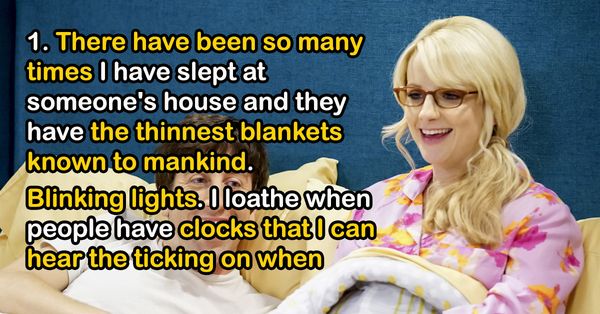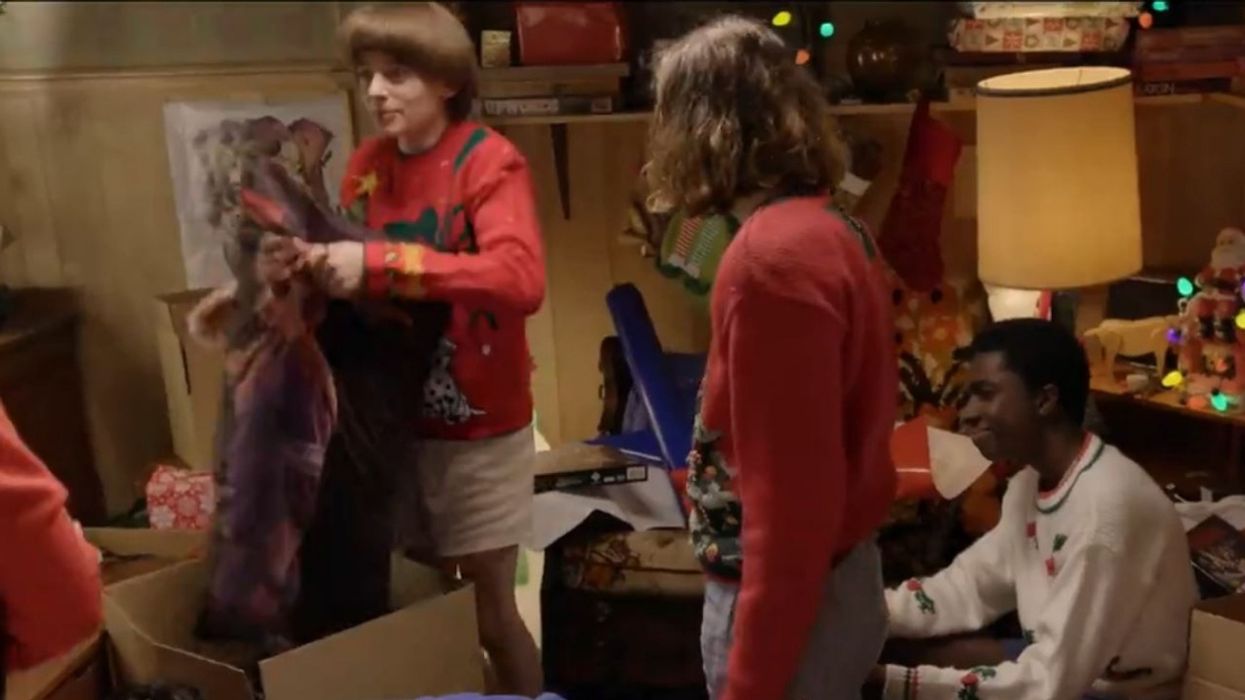March, 2005, LOS ANGELES - For the last nine months, I have been engaged in a challenging, and, to my surprise, immensely informative charge. Last summer, I was asked to serve on a task force suggested by New York Congressman Charles Rangel and chaired by former Illinois Representative, Cardis Collins, to evaluate a new technology for measuring television viewing - a system called the Local People Meter.
Like all of you, I had known of the Nielsen ratings. For people working in television, the ratings mean life or death. If your rating is good, your show is renewed and you survive for another season. If it's low, your show is cancelled and you find yourself among the unemployed. This recently happened to the latest Star Trek spin-off, "Enterprise." Its low rating killed it.
Yet, I knew very little about how the ratings were arrived at. It was a mystery to me. The Nielsen rating was life or death to us and I didn't know how this murderous and, at other times, life sustaining system worked.
I'd never met anyone in the Nielsen rating pool. So serving on the Independent Task Force on Television Measurement was an eye-opening education. Beyond learning about the Nielsen rating process as it had been practiced, I learned about the new technology being introduced as well as something about technologies yet to come. I learned of the scores of interests, other than those of us involved in television production, that are vitally concerned with the Nielsen rating - advertisers, ad agencies, broadcasters, language groups, statisticians, demographers, researchers, and many other sectors. I was staggered by the huge advertising dollars, in the tens of billions that are determined by the ratings numbers. I learned a lot.
I vaguely knew that the Nielsen ratings had something to do with measuring the television viewing of representative people selected, based on the last census. These individuals would be requested to keep a diary of the shows they watched. Indeed this proved to be the system as it had been. This rating system was based on the assumption that the people selected would be diligent and honest. Most people were but others were not. Even if a person had not watched their favorite show for whatever reason, that person might have written it down in their Nielsen diary just to keep their favorite show's ratings up. There was virtually no way of verifying the accuracy of the diaries.
The technology being introduced - the People Meter - eliminated that unreliability. A device was to be attached to every set in the household; each member of the selected household had a button that he or she was to press when viewing and everything that particular individual watched would be recorded. The device would capture even the channel surfing of that viewer. This was certainly an improvement over the old diary system.
Because today we have so many channels and so many choices, inevitably the ratings of the big networks were affected. In the days when we had a limited number of options, the big networks had massive numbers. Now, with so much competition, some of the big networks numbers, inevitably, were adversely impacted. Some of those affected networks challenged the precision of the People Meter count. There also was the allegation that minority audiences were not accurately counted. Thus, the Independent Task Force on Television Measurement was formed to make an objective assessment of the accuracy of the People Meter system.
The Task Force met and received testimonies from many individuals representing myriads of interests. We met with them throughout the country. We formed committees to address specific areas of concern. Because the members were located throughout the country, there were countless telephonic meetings. The members of the Task Force worked tirelessly and collegially. We listened to the many testimonies; made findings and crafted recommendations for improvements to the accuracy of the measurement. After nine months of dedicated work, the report of the Task Force on Television Measurement was completed in March. Those interested in looking over the full report can download it here and get more information on the Nielsen ratings by clicking www.everyonecounts.tv. Our Report has been well received. Nielsen has accepted the Report and our recommendations. Nielsen has already implemented many of the recommendations and others soon will be.
My time with the Task Force has been personally enriching. I now have a deeper appreciation of the complexity of our dynamically transforming society both technologically and demographically.
Demographically, the ethnic population of this nation is growing not only explosively but also in multifaceted combinations. Caribbean Africans may be Black but culturally Spanish speaking Latino Blacks. Asians from South American countries like Peru or Argentina are likewise Spanish speaking. The population from the Middle East is growing rapidly in certain parts of the country. Blacks from Africa are now adding to the mix of languages spoken in the United States. Intermarriages are creating a myriad ethnic and language combinations. Children of these intermarriages are forging new self-identities. The buying power of these groups is rising faster than that of the non-ethnic population. The measurement of television viewing by such complex and diverse audiences is becoming increasingly challenging and Nielsen has been developing technologies to meet that challenge. The Local People Meter is a step in that direction.
However, technology is adding to the complexity. Advances in technologies like digital video recorders, Tivo, and others allow the audience not only to determine when they view a show, but also to fast-forward right through the commercials that pay for the shows. This is of critical concern to advertisers who pay enormous sums for their ads. I learned that we will soon be seeing people selected to wear cell-phone-like devices called the Portable People Meter that will not only capture the shows and their accompanying ads that they see at home, but wherever they happen to see television, whether at a bar, a friend's home or on the street. Yet to come are devices that not only will capture the shows seen but the purchases that individual makes by registering the bar-code information of the product bought. Further, these devices will also record the time it took for an individual to make a purchase after they first saw the ad. I don't think Star Trek ever explored this frontier or the boundaries of privacy that technology approaches. What a fascinating Star Trek script that would make!
Scientists Have Developed A New 'Planetary Health Diet' That Could Literally Save Lives And The Planet At The Same Time

In an attempt to help curb worldwide issues such as climate change, and malnutrition in poverty stricken areas, a joint commission by EAT, a non-profit seeking to transform the global food system, and The Lancet, an old and respected medical journal, has released a recommended guideline for dietary and planetary health.
The report recommends cutting back meat consumption to at most, a burger patty or equivalent a week, and supplementing your protein intake with nuts, legumes, and beans. An increase in veggies and fruits would make up the bulk of your meal plate.
The dietary guideline was established by a coalition of over 30 scientists, researchers, and doctors designed not just with human nutrition in mind, but also sustainability. With estimations that the planet will reach 10 billion people by 2050, scientists are working to figure out how to feed them all.
Additionally, the red meat industry has for a long time, been known to be a contributor to greenhouse gasses, while land conversion for food production is the greatest factor in biodiversity loss. The report from the EAT-Lance commission estimates that through nutrition and agricultural changes from this diet, we can save 11 million lives every year.
That sounds pretty great.
The EAT-Lancet commission lists very specific macronutrient ranges for their proposed diet, from 300g of veggies per day, to only 7g for red meats. However, it's this specificity that is drawing criticism.
John Ioannidis, the chair of disease prevention at Stanford university has praised the growing attention to how diets can affect the environment, but states the commission doesn't represent the scientific uncertainty between health and nutrition.
Dr. Georgia Ede, who writes for the site Diagnosis: Diet, took issue with the report's specific recommendations. Dr. Ede's website makes the case for low carb and paleolithic diets.
She points out the commission says,
"We have a high level of scientific certainty about the overall direction and magnitude of associations described in this Commission, although considerable uncertainty exists around detailed quantifications."
And yet, they recommend 0 to 58g per day of poultry, with a 29g midpoint. This seems very specific.
People are not willing to give up meat so easily.
Still, the report is a good starting point for the discussion we need to have about food's connection to not just our health, but the planet's well-being.
As Dr. Howard Frumklin, head of the Wellcome Trust which helped found the EAT foundation says himself,
"The links among diet, health and the environment are well-documented, but, until now, the challenge of attaining healthy diets from a sustainable food system has been hampered by a lack of science-based guidelines.
"While this report does not have all the answers, it provides governments, producers and individuals with an evidence-based starting point to work together to transform our food systems and cultures."
What should be a discussion is turning into an argument.
If we're going to be able to feed everyone, ensure their diet is nutritionally balanced, and try to curb climate change, it's important that people start talking about the positives and negatives of their current diet. The report provides a sense of context to which people can compare and share their ideas and study.
People Are Roasting Trump Over His Mind-Numbing Observation About The Wetness Of Water 😂
Donald Trump thanked the first responders who came to the aid of victims of Hurricane Florence. The storm devastated portions of North Carolina, dumping massive amounts of rain and damaging millions of dollars in property. Many natural areas were destroyed, some farmers lost everything and more than a few people have been left homeless. The first responders after this massive storm were literal life savers, and Trump was absolutely right to thank them. Unfortunately, the sentiment of his message was lost for many people because he didn't seem to put any effort or preparation into what he was saying. Then, in the middle of his off-the-cuff message, he confused everyone by talking about the wetness of water.
As Trump described the storm and the importance of first responders he told the world:
This is a tough hurricane, one of the wettest we've ever seen from the standpoint of water. Rarely have we had an experience like it and it certainly is not good.
The Tweet went out in the middle of the day on Tuesday, September 18th. At the time of this article, it hasn't even been up for 24 hours and already has over 13,000 comments. Many of them pointed out how Trump didn't even seem to try...
and how asinine his description was.
We don't know if Trump will continue to address the public by releasing these kinds of videos, or if they will continue to be as unrehearsed as this one is. We assure you, if they are, Twitter will have plenty to say about it.
H/T: Huffington Post, Twitter
Michael C. Hall Is Starring In A One-Night-Only Broadway Musical About Skittles—And No, We're Not Making This Up

Super Bowl Sunday: it's the only time when commercials are more popular than the show they interrupt. However, this year's best ad might not even be on TV.
Funny, irreverent, and sometimes controversial, Super Bowl ads have become as much of an event as the big game itself. Even those who don't watch football will tune in and watch as brands fight it out for the most talked about commercial of the year.
For advertisers though, getting your ad in front of one of the largest television audiences out there doesn't come cheap. A 30-second spot for this year could cost up to $5 million!
Candy maker Skittles decided to skip the Super Bowl and head for Broadway. For one-night-only, Skittles The Musical will appear on Broadway starring everyone's favorite serial killer, Dexter actor Michael C. Hall. No, we're not kidding.
The concept has so many people scratching their heads that Skittles needed to make another ad just to explain it.
Skittles The Musical ))) Starring Michael C. Hallwww.youtube.com
Anxious over appearing in the musical Hall sits down with a therapist, who like the rest of us is not exactly sure what it is. Hall explains the 30 minute advertisement is a real musical, you even have to buy tickets to go see it.
At one point Skittles even takes a self-deprecating jab at themselves and Hall, implying the musical is a terrible career decision.
After all, who is going to pay $207 a ticket to go see a 30 minute advertisement for Skittles?
A whole lot of people apparently
Tickets to the performance at the Town Hall theater in New York are almost sold out. People may not know what's going on, but they are ready to taste the rainbow.
@Skittles I’m ready! Purchased my tickets #SkittlesTheMusical— Corey (@Corey) 1548091647.0
@playbill @Skittles https://t.co/uo9aLkDV2f— robbie. (@robbie.) 1548135341.0
@playbill @Skittles My mind is blown and my heart is warmed. How fun! “Broadway the rainbow” indeed ❤️🧡💛💚💙💜— Allison Wonderland (@Allison Wonderland) 1548185407.0
If someone takes me to see skittles the musical I'll love them forever.— ☆Bambi☆ (@☆Bambi☆) 1548218569.0
On its surface Skittles The Musical may just look like an over the top gag from a brand known for its unusual marketing, but Skittles recruited some serious Broadway talent to put it together including playwright Will Eno and a cast straight from some of the biggest shows on Broadway.
According to Skittles the show will take "an absurdly self-reflective look at consumerism and the ever-increasing pervasiveness of brand advertising in our lives."
And if that wasn't enough Skittles will also be donating all the proceeds from the show to Broadway Cares/Equity Fights AIDS. Skittles parent company will match that donation up to $50,000. You had our attention Skittles, now you have our interest.
Wait so rather than spend a bucket load of 💰to take out a 30sec ad during the SuperBowl, @Skittles will present a L… https://t.co/OVnNQfQ506— Christopher D. Clegg (@Christopher D. Clegg) 1548096836.0
@cadimy @playbill @Skittles If you read the article, it addresses that they're doing a short show in lieu of a supe… https://t.co/3Hxm2lNLyI— a dope ghost (@a dope ghost) 1548094203.0
@lnternetqueer @playbill @Skittles well that's quite neat!— 🦇 (@🦇) 1548094980.0
There is no telling how a commercial/Broadway musical from the bizarre minds over at Skittles will turn out, but it's guaranteed to be an performace like Broadway has never seen before.
The Kids From 'Stranger Things' Wrapped Presents For Superfans—And Did A Delightfully Terrible Job 😂
When it comes to giving gifts, not all celebrities are as crafty as Taylor Swift, but that didn't stop the adorable stars of Netflix's Stranger Things from giving it a try.
In a recently released video from Netflix, actors Millie, Finn, Noah, Caleb, Gaten, and Sadie got together for some holiday cheer and to wrap gifts for fans. But kids will be kids, even if they star in a hit television show. Watch as chaos ensues.
Fans loved every moment, even if the kids weren't the greatest wrappers.
@Stranger_Things I love seeing them mess around with each other.— Abby! (@Abby!) 1545318707.0
@doublejoywilson https://t.co/qgFgkZpTxQ— Stranger Things (@Stranger Things) 1545318849.0
@realrevella https://t.co/G5Er8pydg5— Stranger Things (@Stranger Things) 1545318801.0
@themallratss we do what we can https://t.co/POBMVbXfZS— Stranger Things (@Stranger Things) 1545319099.0
@Stranger_Things They’re a cute mess 😂— Janet ⁷✜🪐 (@Janet ⁷✜🪐) 1545318854.0
@minseokjin94 https://t.co/Dr4Y4xFYyM— Stranger Things (@Stranger Things) 1545318939.0
@Stranger_Things Thanks for the gif...they’re a MESS mess https://t.co/cG5ODdPDf0— Janet ⁷✜🪐 (@Janet ⁷✜🪐) 1545319571.0
@pvladins AH THE SOUND OF HOLIDAY CHEER— Stranger Things (@Stranger Things) 1545318737.0
@Stranger_Things HAPPY HOLYDAYS TO THE DEMOGORGON https://t.co/BpB1ZixUK5— 𝑣𝑎𝑙 ⚯͛ (@𝑣𝑎𝑙 ⚯͛) 1545318680.0
@edwardistheman @netflix ok here https://t.co/UwOLIa1T1C— Stranger Things (@Stranger Things) 1545318880.0
We just can't get enough of these talented kids!













